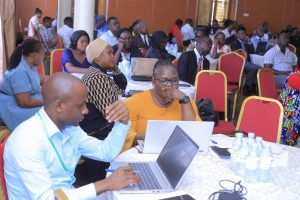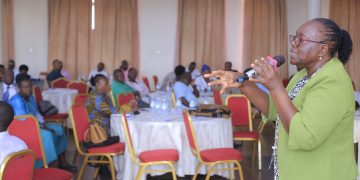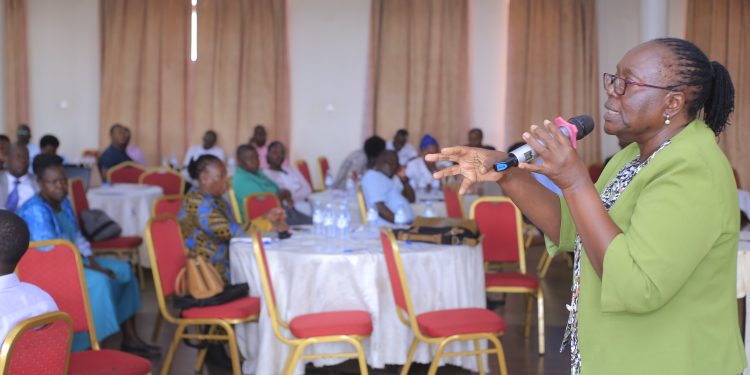The Executive Director of the National Curriculum Development Centre (NCDC), Dr Grace K. Baguma, has called for renewed commitment to improving literacy levels among Ugandan children by adopting familiar languages as the Medium of Instruction (MoI) in lower primary schools (P.1–P.3).
Speaking at a validation meeting held at Esella Country Hotel in Kira, Dr Baguma revealed findings from a recent nationwide study aimed at identifying the most feasible languages for teaching and learning in early education. The study, conducted across 39 districts in all regions of the country, gathered views from educators, policymakers, researchers, and local communities to inform Uganda’s language-in-education policy.
“The choice of medium of instruction is crucial in shaping how children learn and engage with educational content,” Dr Baguma said. “When children first learn in a language they understand, they build stronger literacy skills, which in turn boosts performance in other subjects.”
Dr Richard Irumba, NCDC’s Deputy Director for Research, Consultancy, and Library Services, explained that the study seeks to guide the government on the most feasible and cost-effective languages to be used in early education.
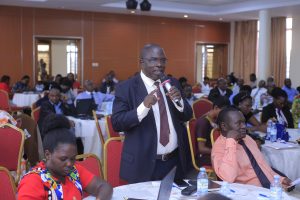
“It is not feasible for the government to provide instructional materials and teacher training for all 65 languages recognised in the Constitution,” Dr Irumba said. “This study helps us prioritise languages so that education services are delivered effectively without eliminating any language from the curriculum.”
The study, conducted in 1,200 schools with 8,913 respondents (a 94% response rate), gathered insights from communities, teachers, cultural leaders, and education officials across all regions.
Proposed Languages by Region
According to Sezi Bogere, a researcher with NCDC’s Research and Evaluation Department, who presented the findings, the proposed 22 languages are: Eastern Region: Ateso, Dhopadhola, Kumam, Kupsabiny, Lugisu, Lugwere, Lunyole, Lusamia and Lusoga. Northern Region: Acholi, Lugbarati, Kakwa, Alur and Leb Lango. Western Region: Lugungu, Lukonzo, Rutumbira, Runyankore-Rukiga, Runyoro-Rutoro. Central Region: Luganda. Other: Kiswahili.
Following stakeholder consultations on Wednesday, four more local languages (Madi, Pokot, Lubwisi and Gimara) were added to the list bringing the total to 26 local languages.
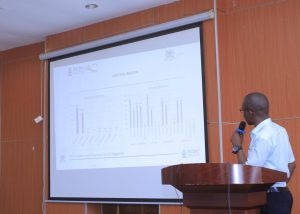
The report recommends Kiswahili as an alternative medium of instruction in multilingual areas like Kiryandongo, Obongi and Ssembabule, where no single local language dominates.
The NCDC study recommends the adoption of a limited number of familiar languages for instruction in early primary, taking into account Uganda’s 66 indigenous languages, regional diversity, and available resources.
Dr Baguma noted that while the government previously attempted to roll out mother-tongue education through the thematic curriculum introduced in 2007, challenges such as a lack of instructional materials, teacher training gaps, and inconsistent implementation hindered progress.
“We have learned from the past,” she said. “This time, we must ensure that teacher preparation, learning materials, and community involvement go hand in hand.”
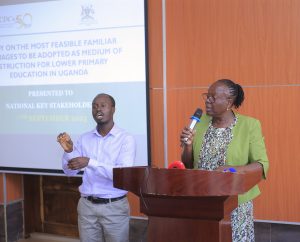
The study also proposes a structured transition to English in upper primary, ensuring pupils are well-grounded in literacy before shifting to additional languages.
Addressing Literacy Gaps
Dr Baguma cited research from organisations such as Uwezo Uganda and UNEB’s National Assessment of Progress in Education (NAPE), which revealed that many children in P.3 and even P.6 struggle with basic reading and comprehension skills.
“When literacy levels are low, performance in all other subjects suffers,” she emphasised. “Our goal is to make sure every child can read, understand, and analyse information effectively.”
The study highlighted persistent challenges facing Uganda’s language-in-education policy, including: a sudden transition from local languages to English in Primary 4 (P.4), leading to learning difficulties and high dropout rates, shortages of instructional materials in indigenous languages, limited teacher training in bilingual and transitional education methods and community attitudes that prioritise English over local languages.
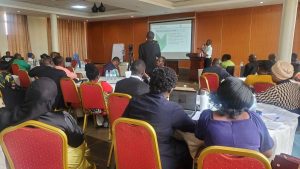
While speaking during a workshop for secondary school administrators on the implementation and assessment of the competence-based curriculum in science subjects, held at Makerere University in July 2025, Dr Irumba recalled his own experience, saying:
“I studied in my mother tongue. English was used as a middle home instruction starting from P4. Do I look like I’m inadequate in what I’m doing? When the curriculum framework was changed in 2006, recommendations were made that in every region, people should learn in their mother tongue because that’s what they use to interact effectively.”
He blamed the elite rather than rural communities for undermining the policy, adding that Uganda’s colonial education system continues to influence perceptions of English over local languages.
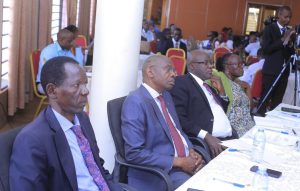
Policy Recommendations
To address these gaps, the new report proposes: mandating local languages as the medium of instruction from P.1 to P.3 with English introduced gradually, developing bilingual education guidelines and training teachers in bilingual instruction methods and implementing a phased transition to English, with both English and local languages used in P.4, and a full switch to English in P.5.
It further proposes producing quality learning materials in local languages and collaborating with publishers to ensure availability, introducing remedial language programs to reduce dropout rates linked to language barriers and community sensitisation campaigns to promote the benefits of bilingual education.
Dr Baguma stressed the importance of multilingual pedagogies, drawing lessons from countries like South Africa and China, where bilingual and multilingual approaches have improved learning outcomes.

Next Steps
The validation meeting brought together government officials, local authorities, universities, civil society, and development partners to review proposed languages and provide input on policy, teacher training, and resource mobilisation.
The final list of feasible languages and a comprehensive implementation strategy will be submitted to the Ministry of Education for policy adoption later this year.
The new language of instruction policy, once adopted, will align with Uganda Vision 2040, the National Education Strategic Plan, and UNESCO’s call for inclusive and equitable quality education.
